On our December round trip through Sicily, we spent a few days in the town of Trapani, on the northwest coast of this beautiful island. It seemed to us that this could be a perfect place to explore the western part of Sicily and to spend quiet Christmas days.
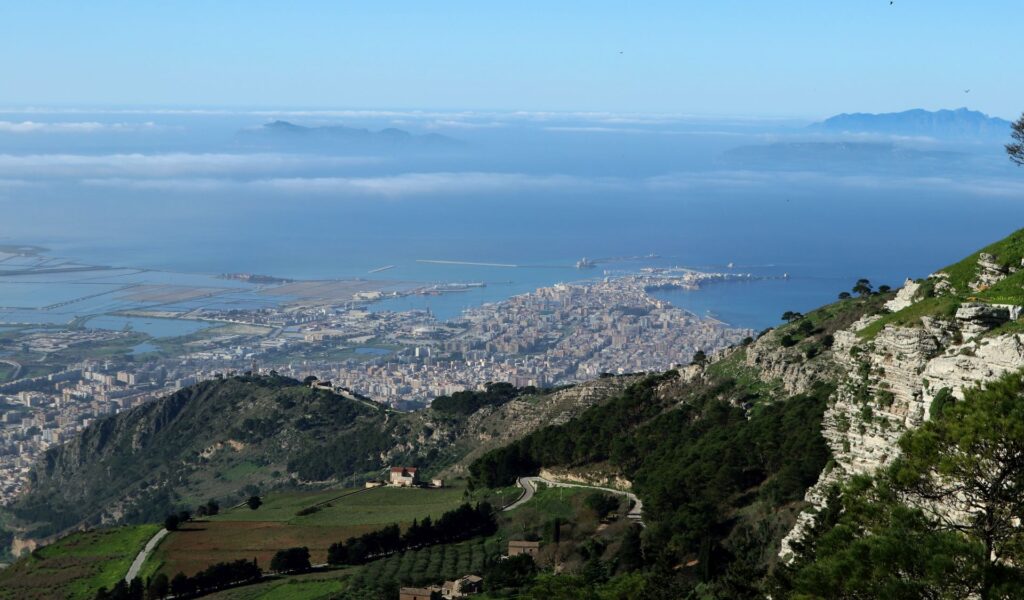
TRAPANI
Beautifully set on a promontory at the foot of Mount Erice, Trapani is a historic place. The Carthaginians made it into a naval port in 260 BC, but it was soon taken by the Romans and later by the Saracenes. In the Middle Ages, Trapani was particularly famous for its salt pans, which remained the main industry for several centuries.
Booking a Trapani-style apartment in the historic centre, in one of the narrow cobblestone alleys. Il Cortile Fiorito („The Flowery Courtyard“) turned out to be a perfect choice. We arrived at Christmas Eve. The old town – located on a narrow peninsula – was beautifully decorated, but almost abandoned. All the inhabitants were obviously at home, celebrating their „Notte di Natale“.
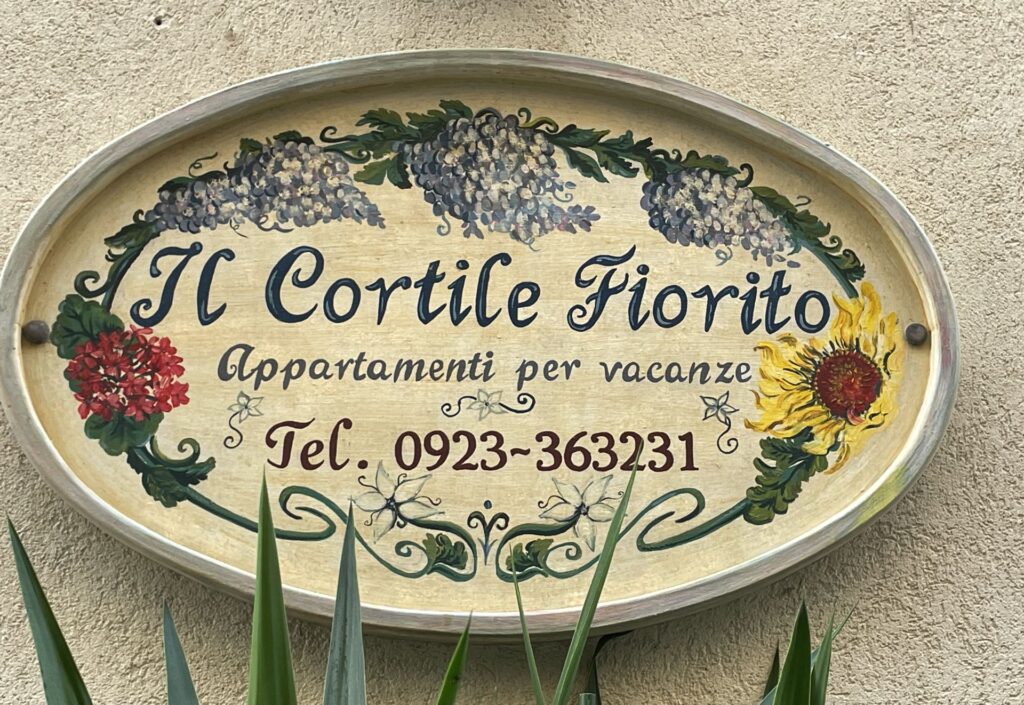
And thus, it was an unpleasant surprise to hear that all restaurants in Trapani were closed… What to do? Our friendly hosts Domenico and Anna found a great solution: they shared their Christmas Eve dinner with us. A real Italian dinner with antipasti (bruschettas), primi (ravioli), secondi (chicken and artichokes) and dessert (home-made tiramisu) …. No need to say that we had a fantastic evening in that charming apartment in the „centro storico“ of Trapani!
We remained a few days there. Strolling down the central street, Corso Vittorio Emanuele, we enjoyed the shops and bars, we watched the local people during their traditional „passeggiata“ and we admired palaces and churches, among which the cathedral of San Lorenzo, decorated with many small sculptures from the 15th century.
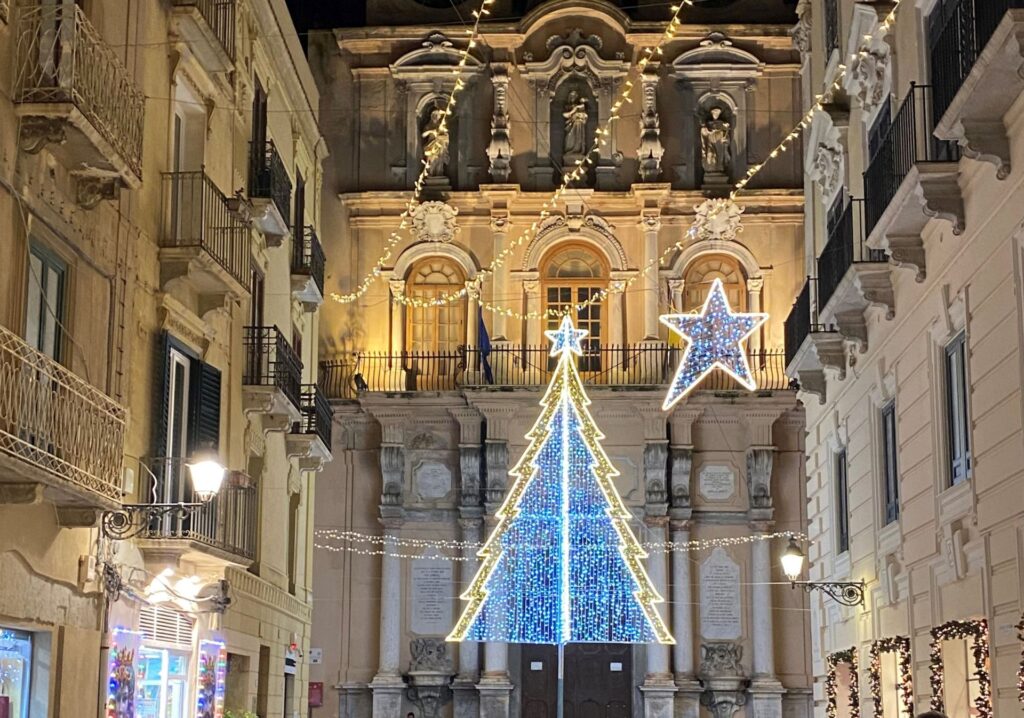
It was a nice experience to walk along the harbor and to see the low square Torre di Ligny, a 14th-century defensive tower, at the end of the pier. On the southern side we could see the island of La Colombaia with its octagonal tower, also known as Castello di Mare. In the 15th century, it was used as a fortress and then as a prison.
We had also planned to visit a few museums (Museo Pepoli and the Museum of Illusions), but unfortunately, they were closed in this period…. Luckily, there was still so much to see in the surroundings!
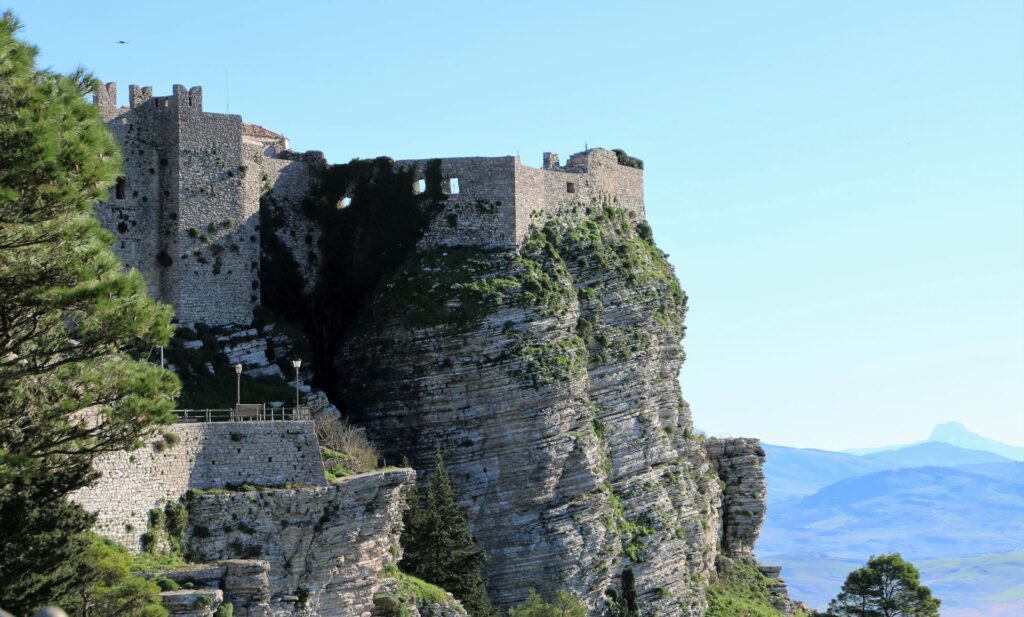
ERICE
This medieval village with around 300 inhabitants is perched on a rocky cliff at more than 750 m above sea level and it offers magnificent views. Originally, Erice or Eryx was an Elymian city (the Elymians were a native Sicilian people), and when it was occupied by the Arabs, it was called Gebel-Hamed.
The trip by car took us around 30 minutes. There is also another option, which is certainly more convenient in the summer season: the funicular from Trapani to Erice. A ticket costs 9.00 euro and it takes around 10 minutes to arrive in the village.
We parked our car and followed the town walls from Porta Trapani around to the right. At the end of the walls was the Castello di Venere (Castle of Venus) – the symbol of Erice, built by the Normans. It is encircled by towers, next to which is the Balio, a marvellous English landscape garden.
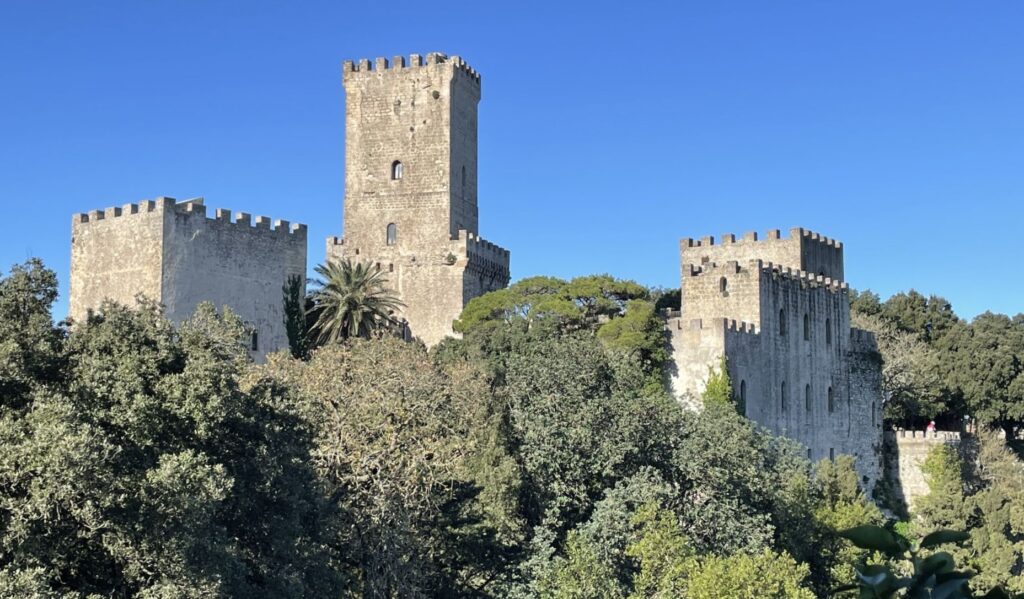
From there, we entered the old town, full of narrow cobbled streets and small squares, flanked by churches and palaces. Once, Erice was famous as the „City of a Hundred Churches“. The streets are beautifully paved with a characteristic pattern of differently sized stones. We admired the Chiesa Madre or Real Duomo, which dates back to the 14th century.
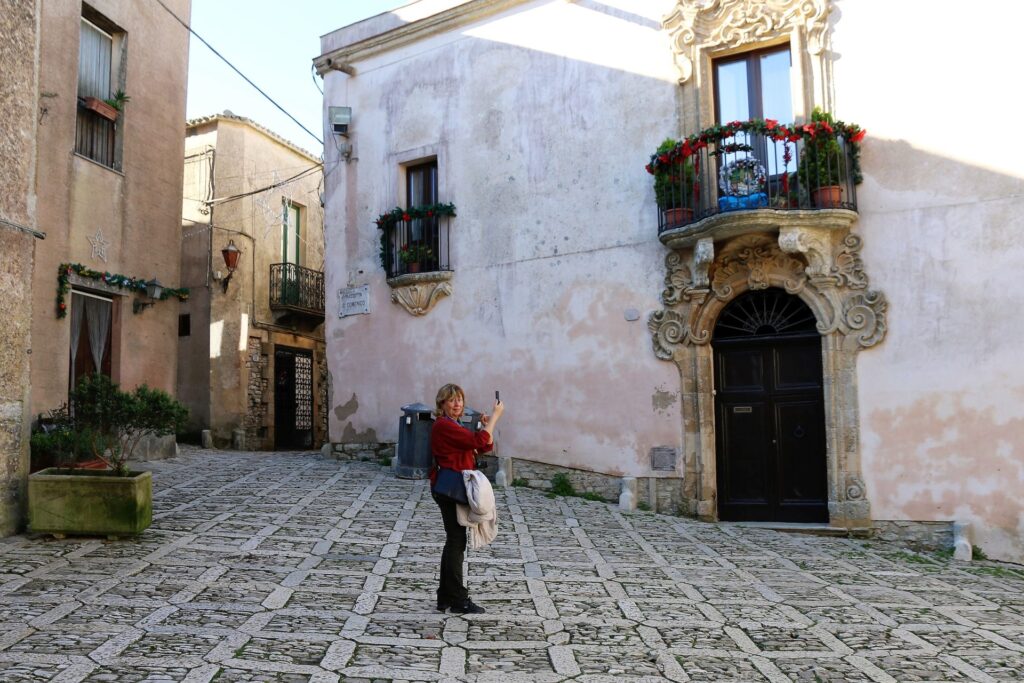
However, what impressed us most was the breathtaking view of Trapani and its surroundings, especially from the town walls. As it was a bright sunny day, on one side we could see the Tyrrhenian coast of the Gulf of Trapani and on the other side the port of Trapani with the salt pans and the Aegadian islands. This seems to be quite exceptional, as Erice is often lost in swirls of mist and clouds.
No wonder that Erice is indicated as one of the most beautiful villages of Sicily!
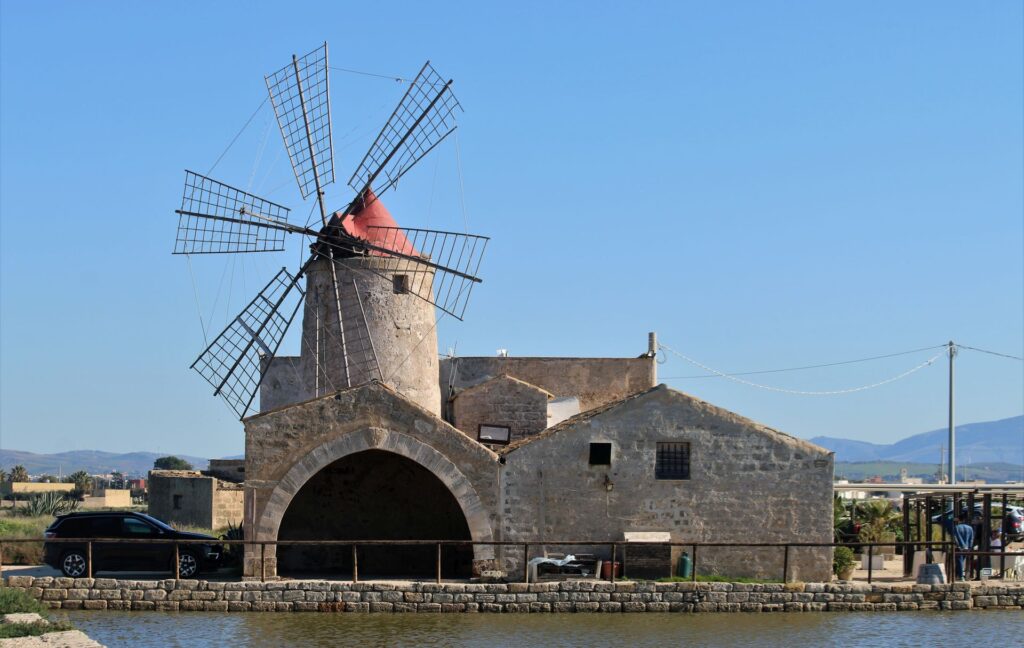
NATURE RESERVE SALINE DI TRAPANI E PACECO
In front of Trapani’s town gates are giant salt fields with windmills that have become an icon of this part of the coast. Salt production began in the 15th century. Today, salt is produced on a much smaller scale than before, but the fields and windmills are a great motif for photographers.
The salt pans were rescued in 1995 from urban expansion. Under protection of the WWF, a nature reserve was established, which is of particular interest for its flora and fauna – a refuge to thousands of migrating birds every year.
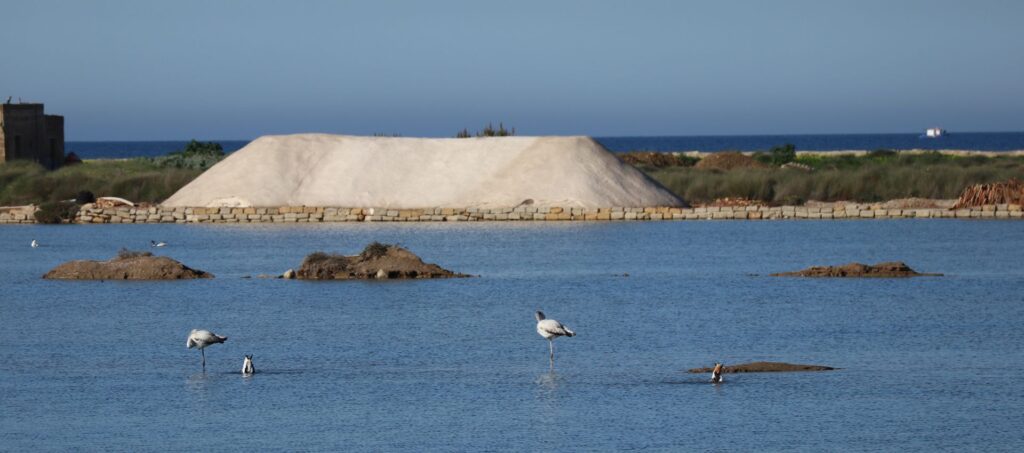
We followed the Via del Sale (Salt Road) that stretches between Trapani and Marsala. It took us along large salt pans with picturesque old windmills that were once used to grind salt. Unfortunately, the Salt Museum of Nubia was closed, but we enjoyed a walk through the salt fields and around one of the best preserved windmills.
Moreover, we saw numerous birds: herons, wild ducks and also several flamingos from a close distance.
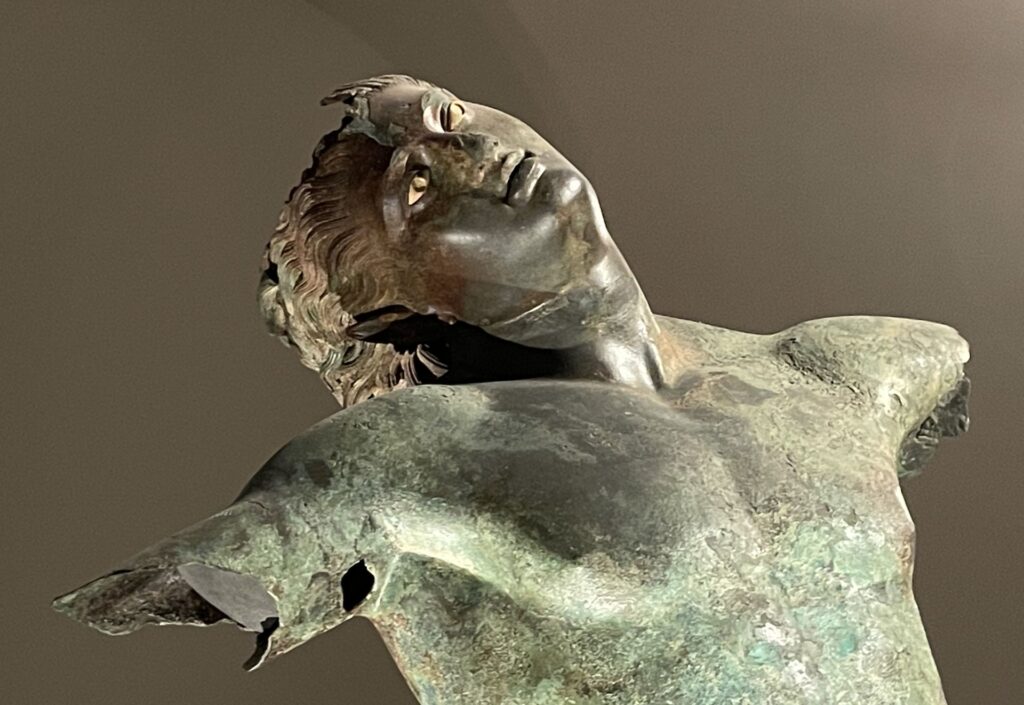
MAZARA DEL VALLO
After our visit to the salt pans, we headed south with the intention to explore Mazara del Vallo, the town of the Dancing Satyr. This appeared to be a good decision, as there was so much to see in this medieval town.
Mazara del Vallo was founded in the 9th century BC by the Phoenicians. It soon became part of Magna Graecia, when it served as a port for nearby Selinunte. After the Romans, the town was occupied by the Arabs. There is stil a historic Kasbah quarter, where around 3,000 Tunisians live, work and study.
After the arrival of the Normans a cathedral was built and many other churches followed. The Chiesa di San Nicol o Regale (1124) and the 11th-century Chiesa della Madonna delle Giummare are the most beautiful examples. The Collegio dei Gesuiti is also interesting. The roof is missing, but the columns and round form are magnificent.
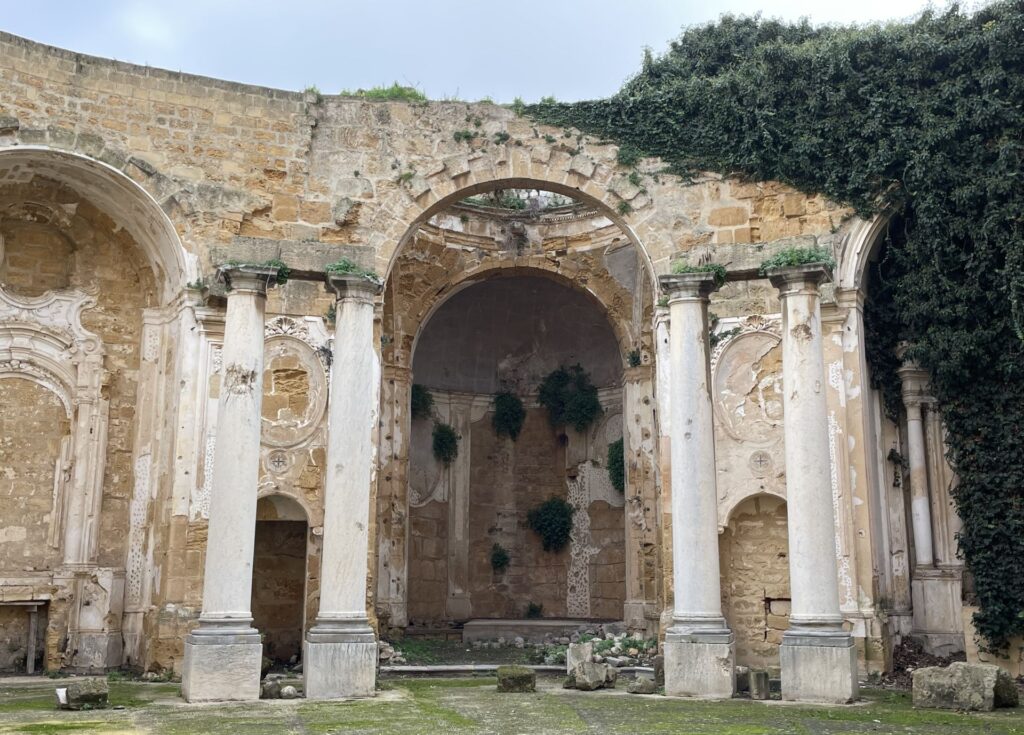
But what is the most famous attraction of Mazara del Vallo? No doubt, the Museo della Satira Danzante (entrance ticket € 6.00). It keeps the Dancing Satyr, a bronze sculpture that was fished out in 1998 from the sea near the coast of Mazara at a depth of 500 meters. This 2 meters tall Roman sculpture probably dates back to some time between the 4th and 1th century BC. I was deeply impressed to see such a magnificent work of art!
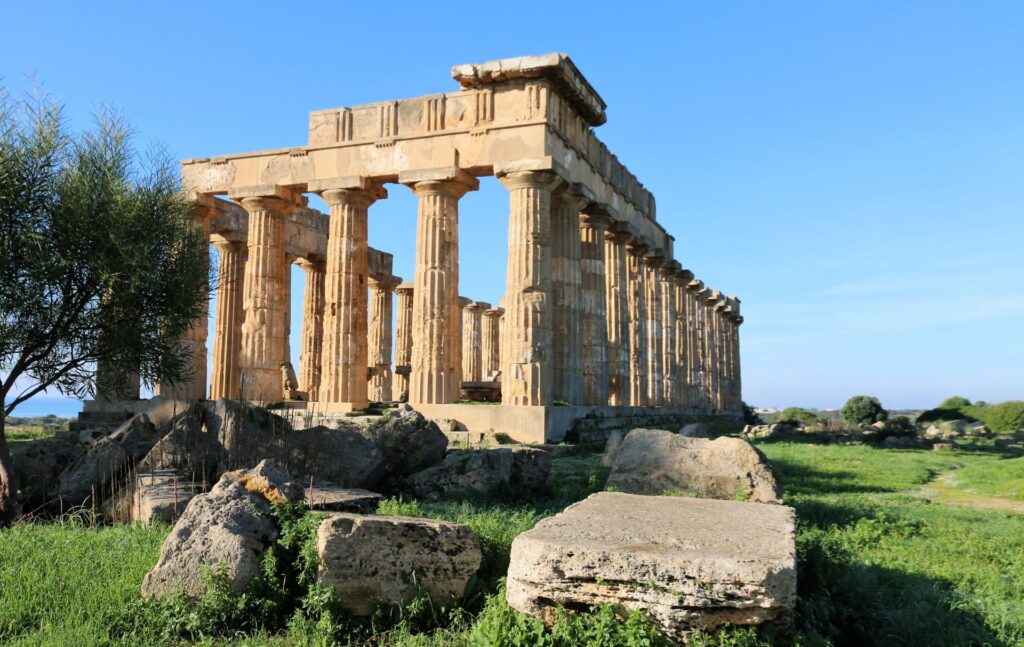
SELINUNTE TEMPLES
At a one hour’s drive from Trapani are the Selinunte temples, spread over different areas and built on a plain overlooking the sea. Honestly speaking, I had never heard of this Greek archeological site, but it appeared to be a real discovery. Can you imagine that it once had a population of almost 100,000 inhabitants? Today, it is the largest archeological park in Europe.
Let me give you some basic information: the ruined city of Selinunte consists of temples, an acropolis, ancient city walls, the ruins of residential buildings, countryside roads and zones not yet excavated. The city was founded in the 7th century BC and it developed over the next few centuries until it was destroyed by the Carthaginians in 409 BC.
The temples’ setting close to the sea is very picturesque. The lack of later development allows visitors to imagine the ancient town of Selinus as it would have been 2,500 years ago.
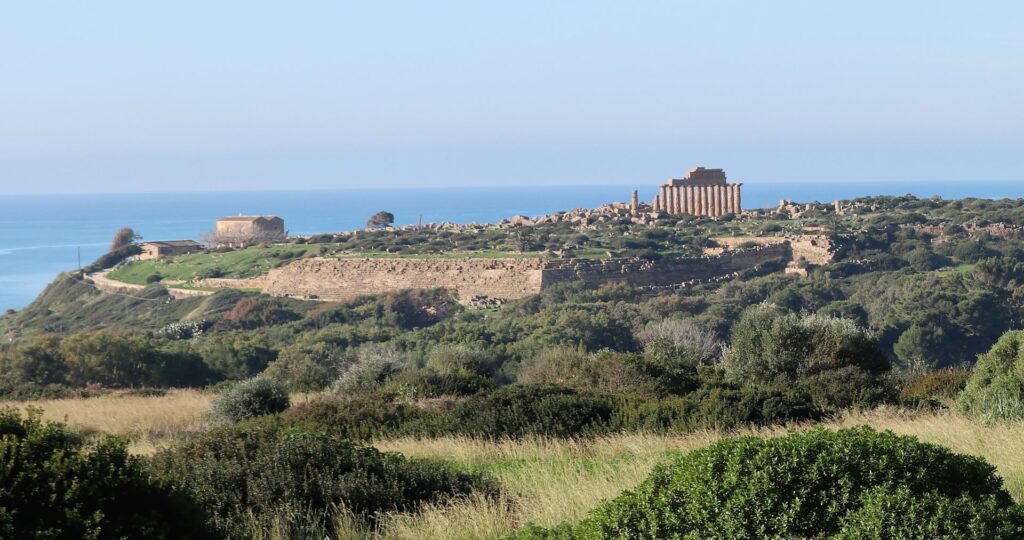
Entering the park (entrance fee € 14.00), we first saw a large Doric temple – the Temple of Hera. The second temple, beside it, is now a mess of stone blocks and sections of colums. In the distance was another structure on the top of a hill, the Acropolis. Fortunately, there was an electric train (shuttle service) that took us there. North of the acropolis we could see the Hill of Manuzza with remains of residential areas and parts of streets. We also visited a small museum with interesting exhibits.
Only a few visitors were roaming around the park, which made it even more attractive for us, as we could easily imagine how people lived here in those ancient times. We did not have time to visit the complete park, but nevertheless, it was of our best experiences in western Sicily!
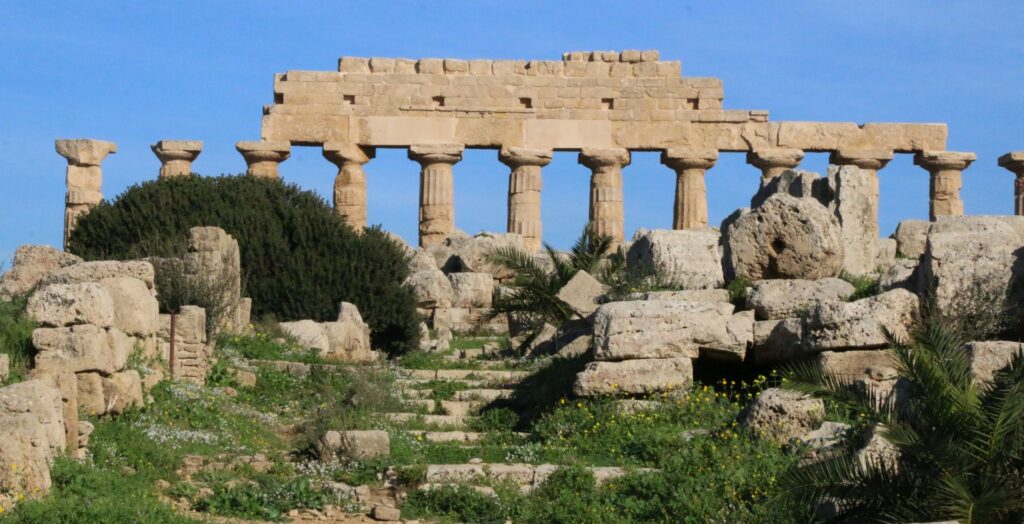
The surroundings of Trapani have much more to offer: Capo di San Vito, the temples of Segesta, the town of Marsala… But of course, we had to make a choice and I a think that we have seen the most attractive sites in this area. We spent a great time in Trapani!
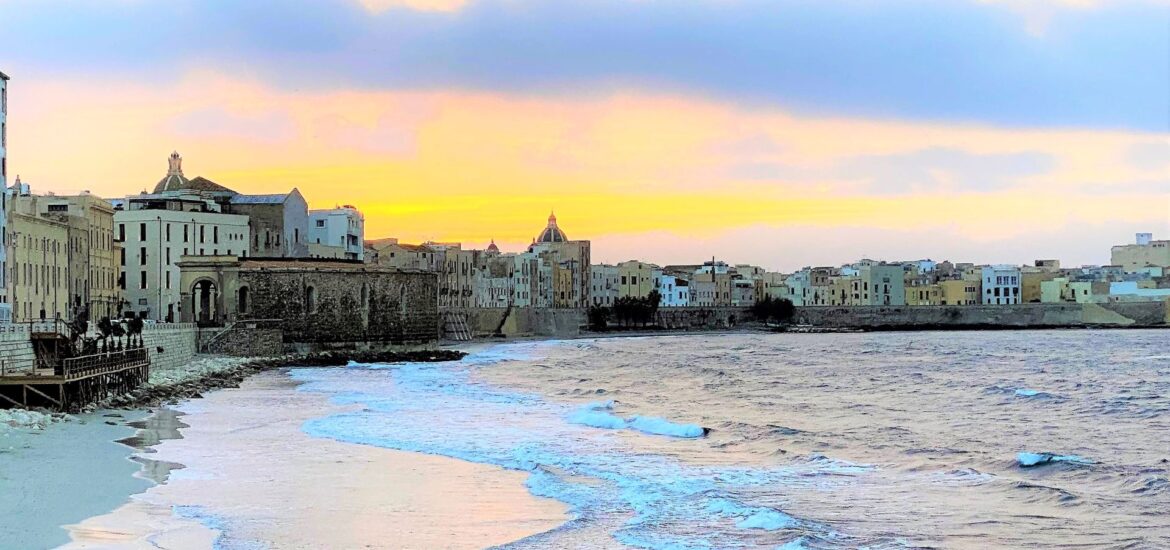
Wow history comes alive when I read your story!